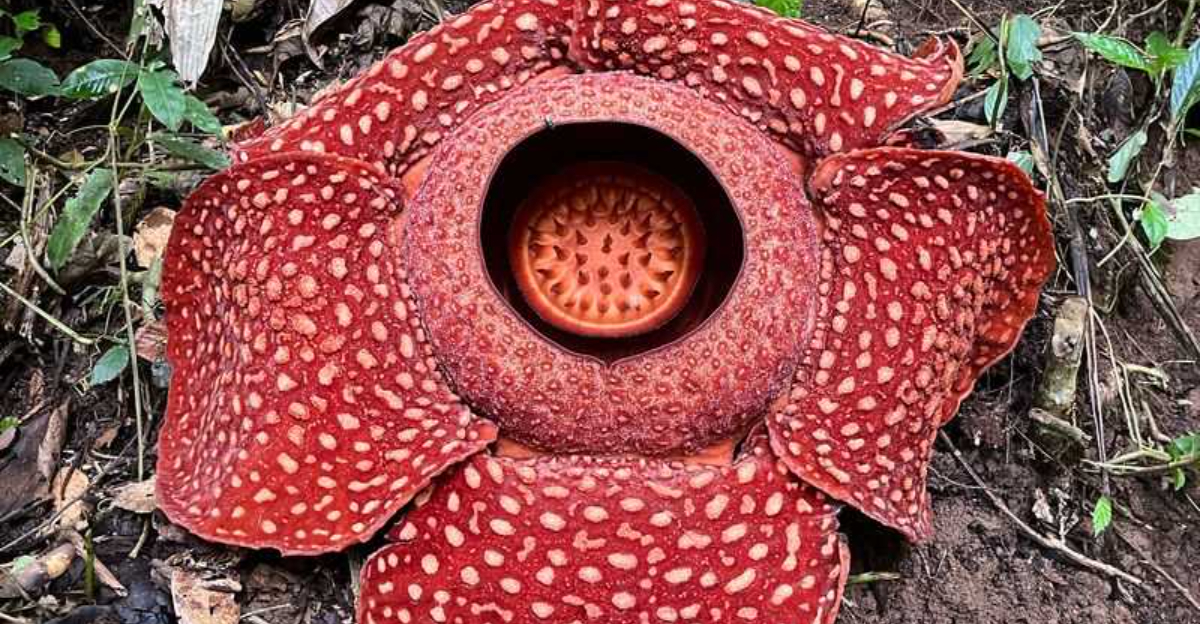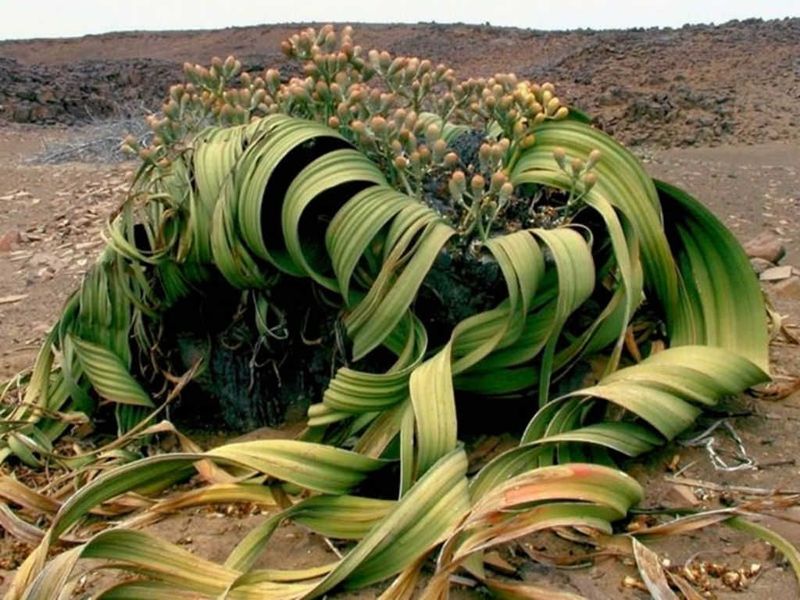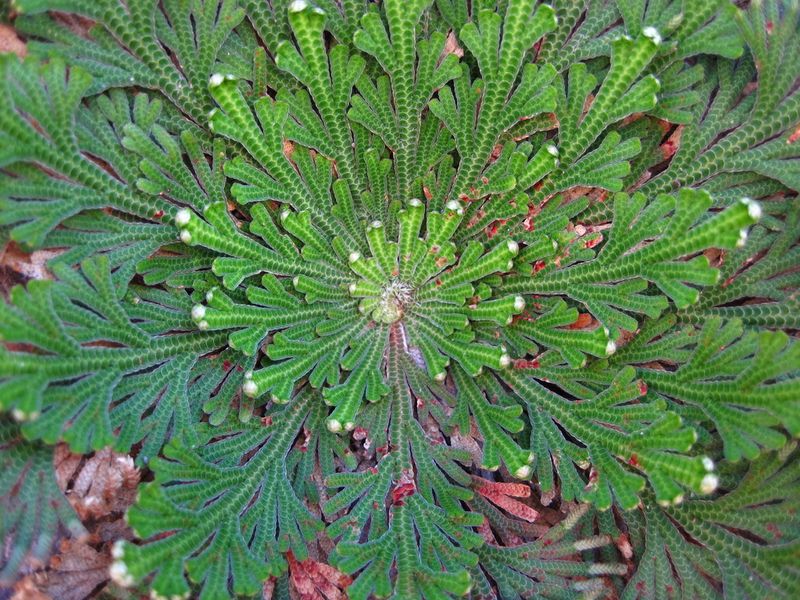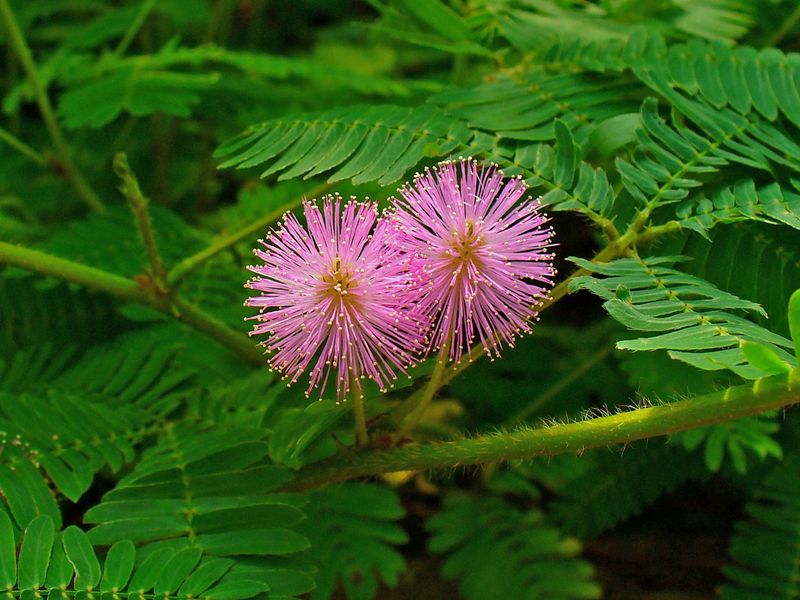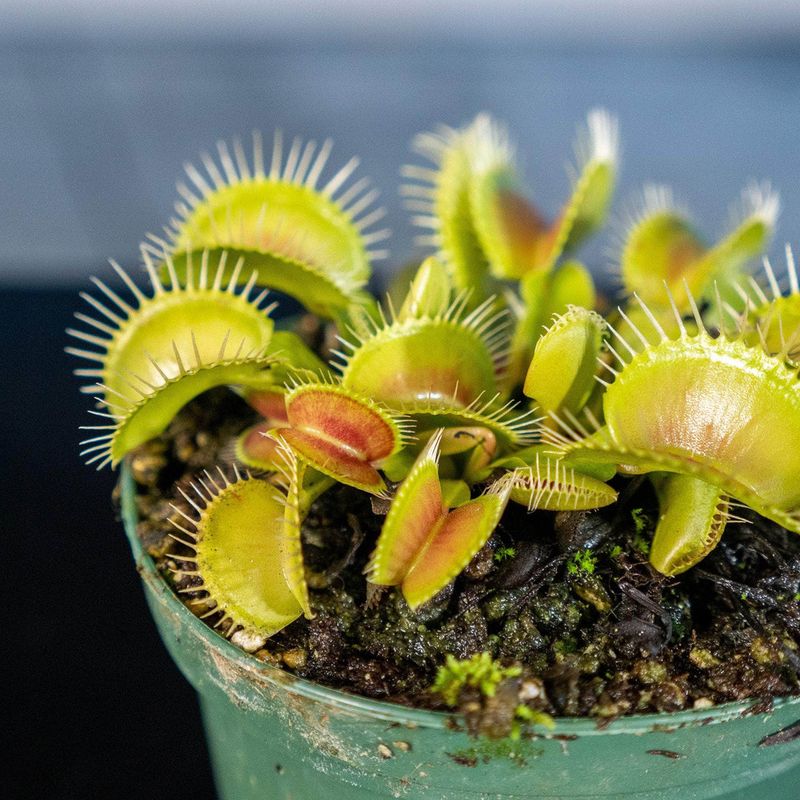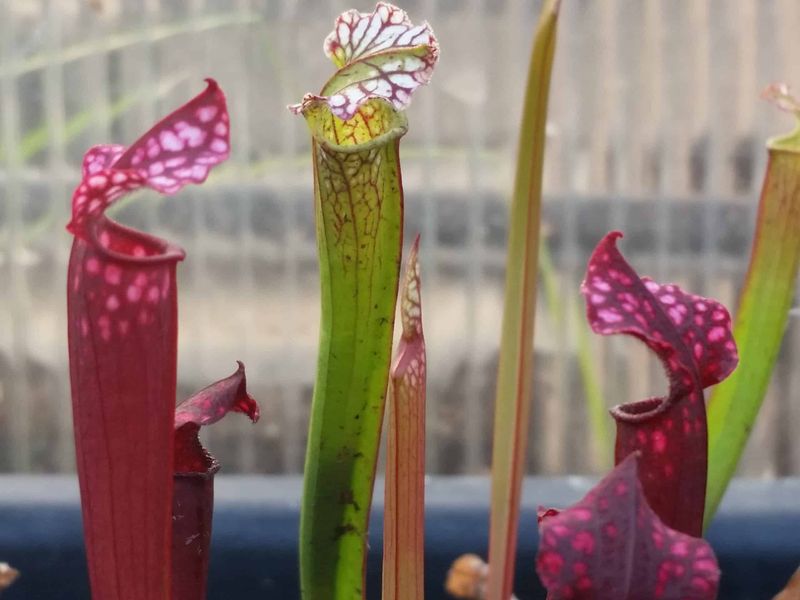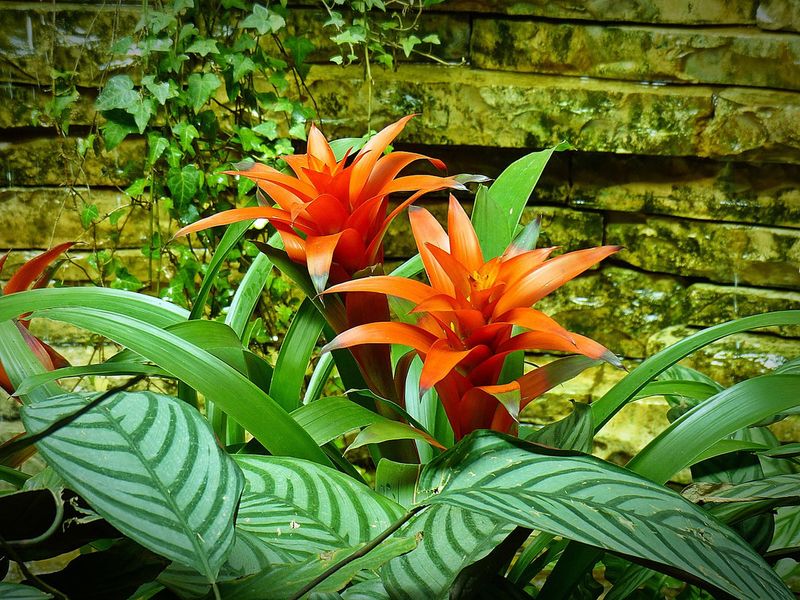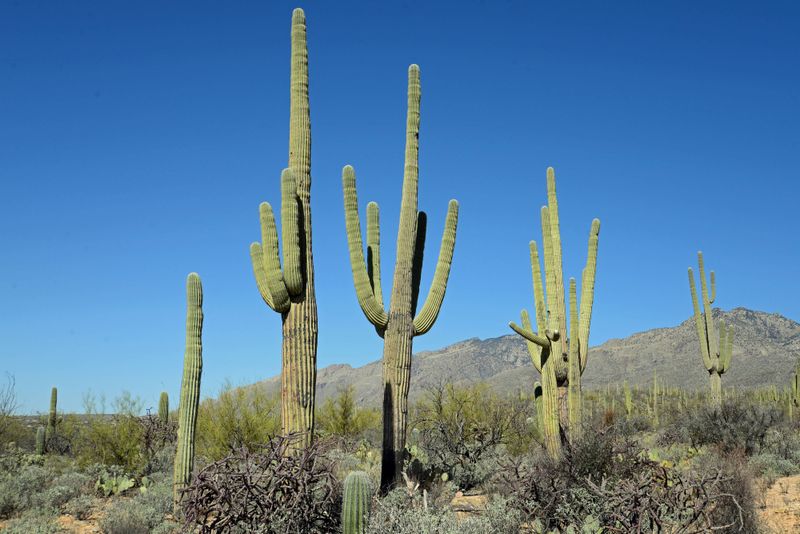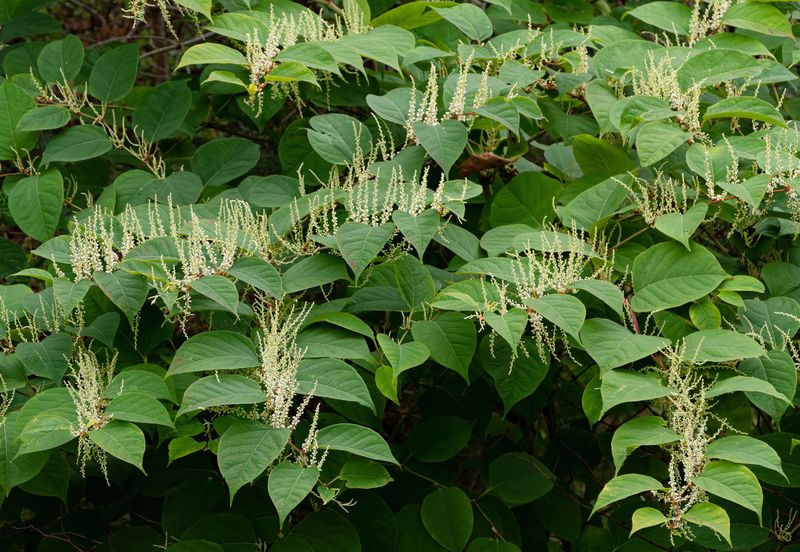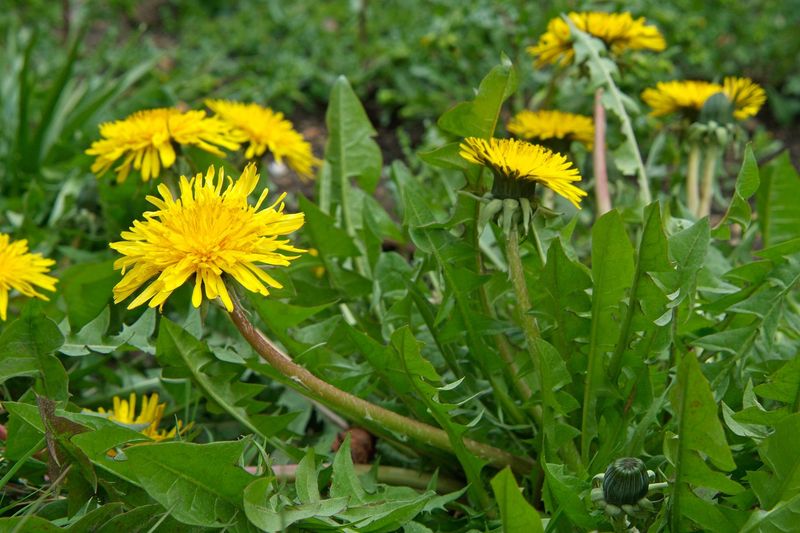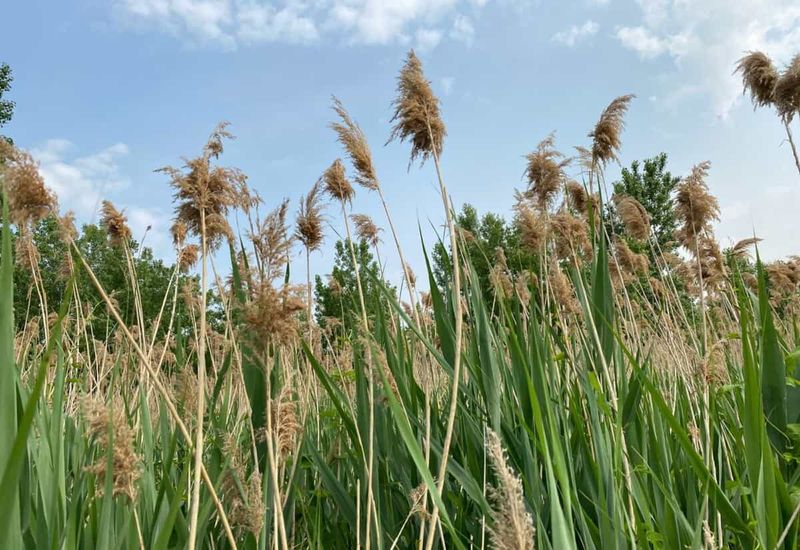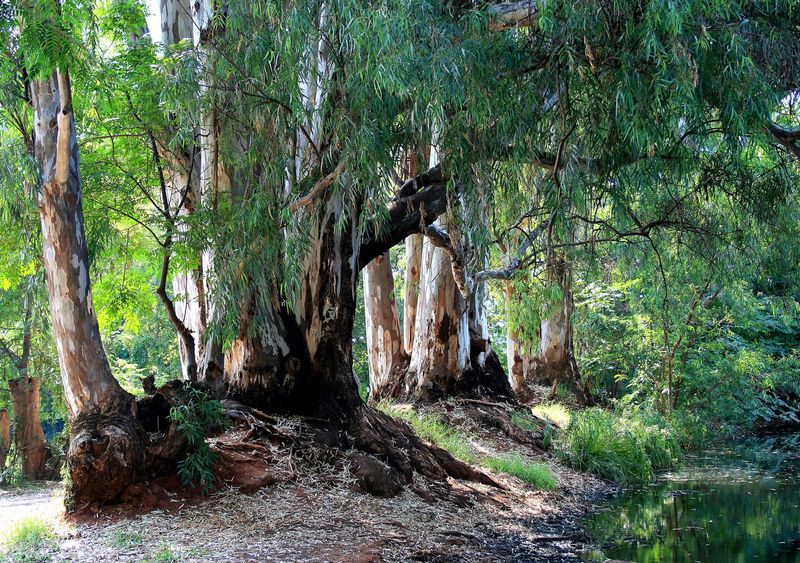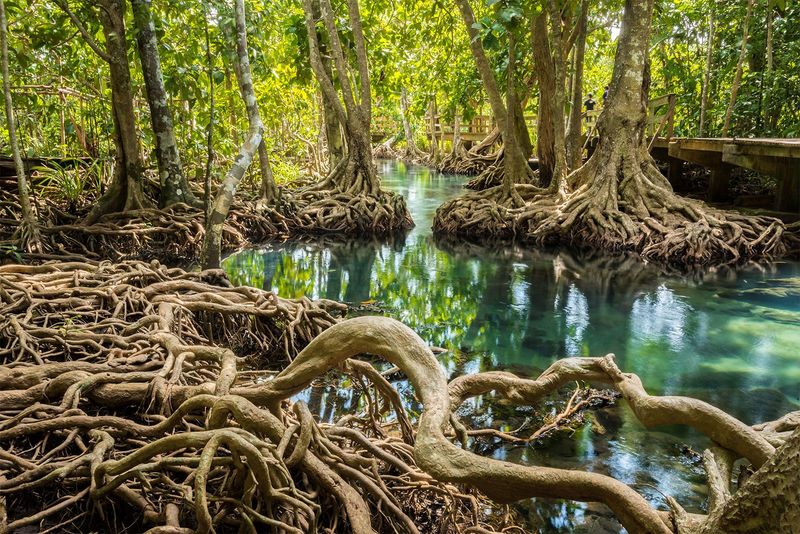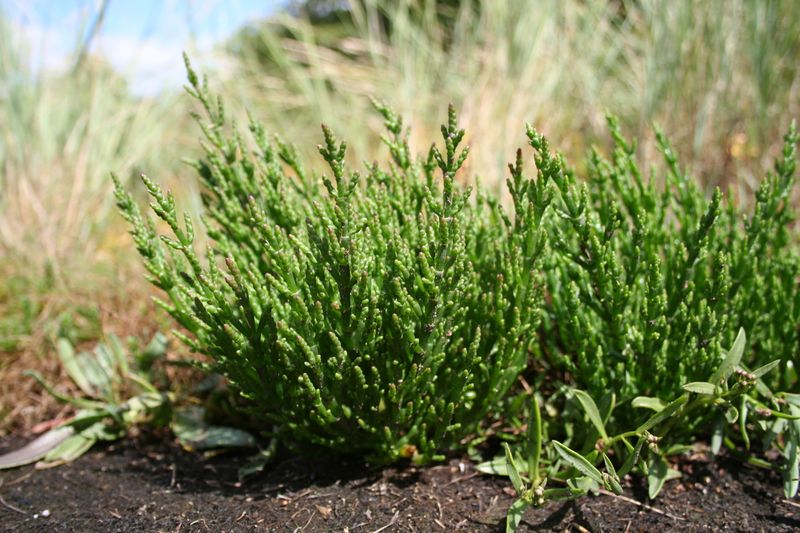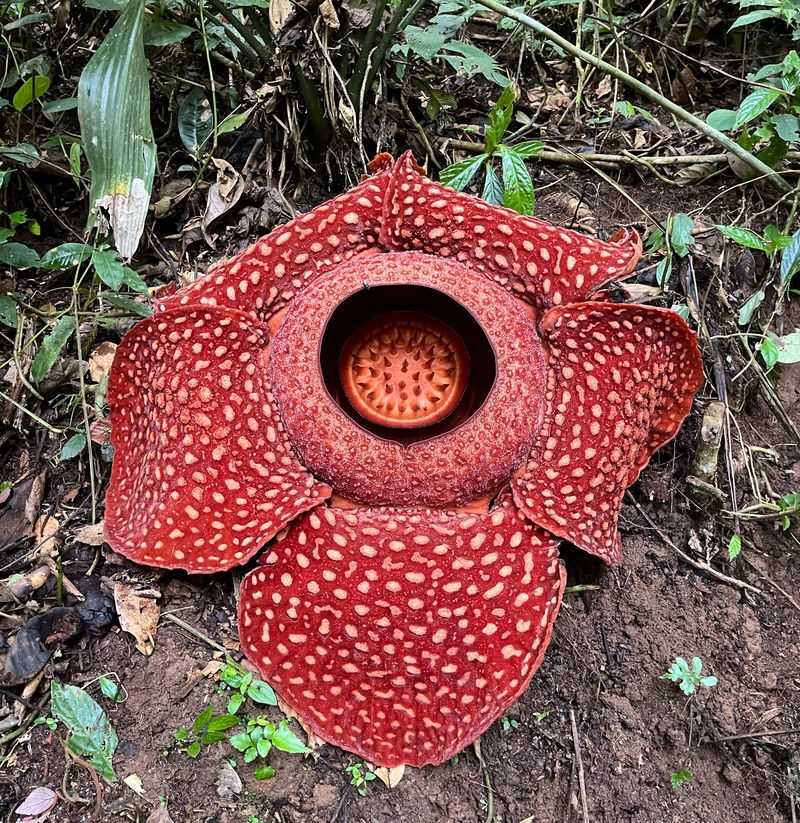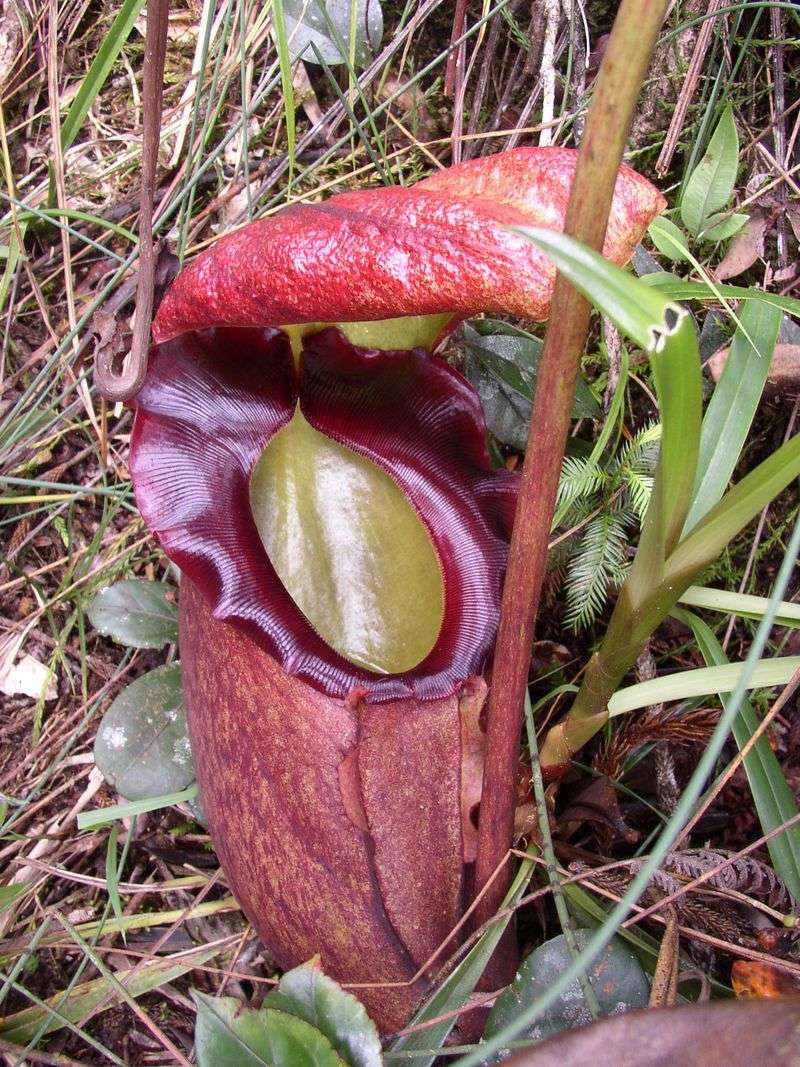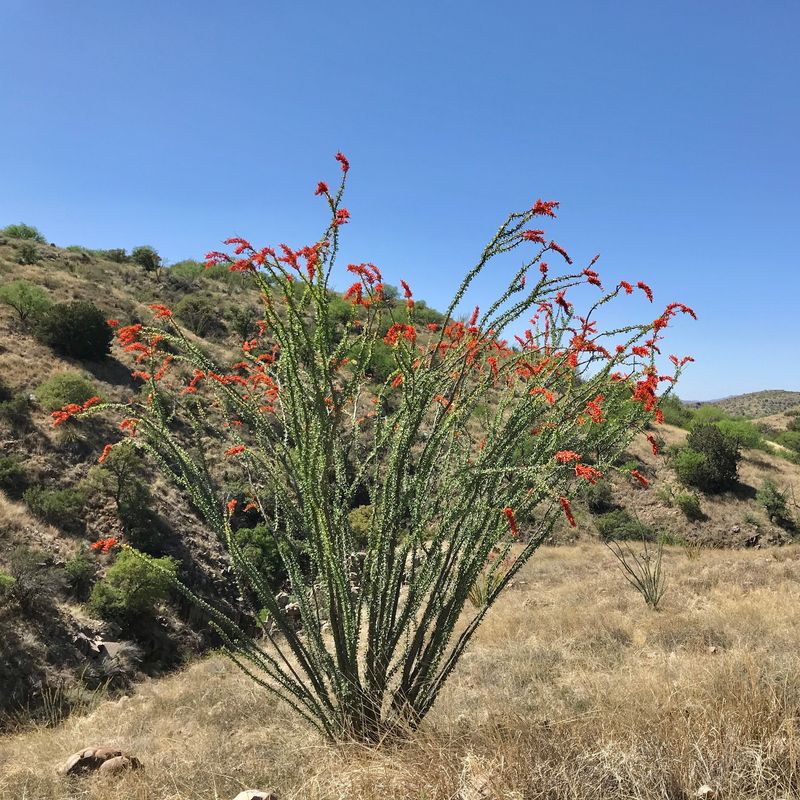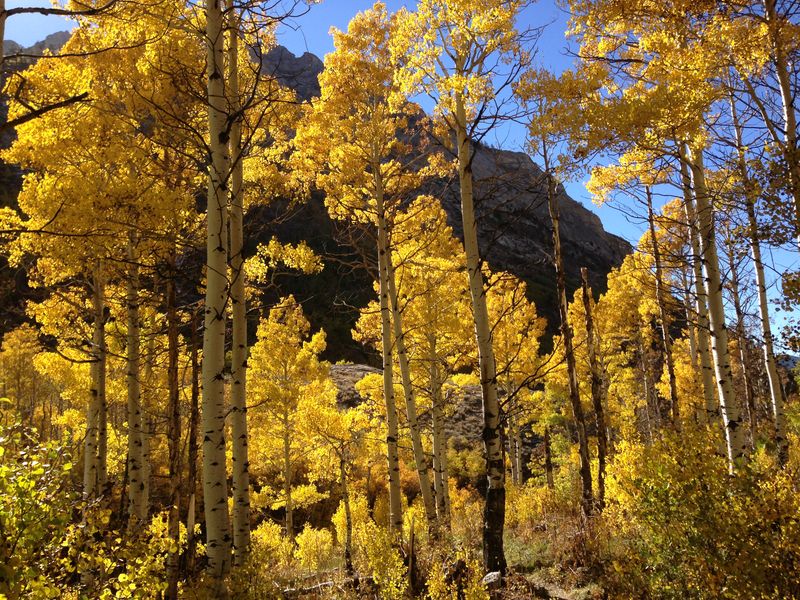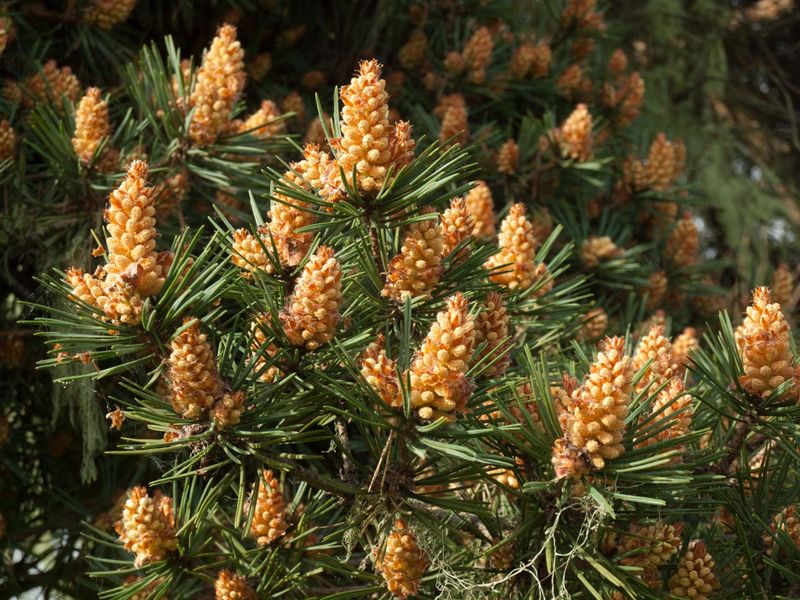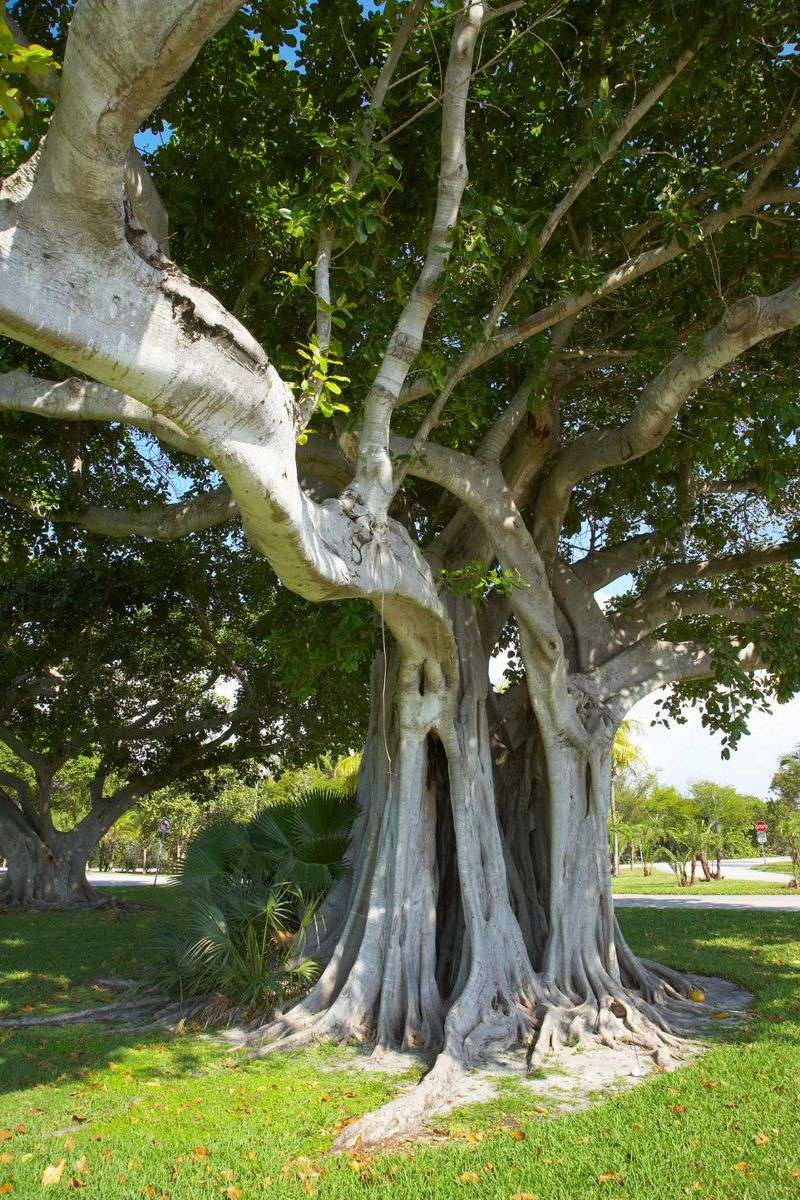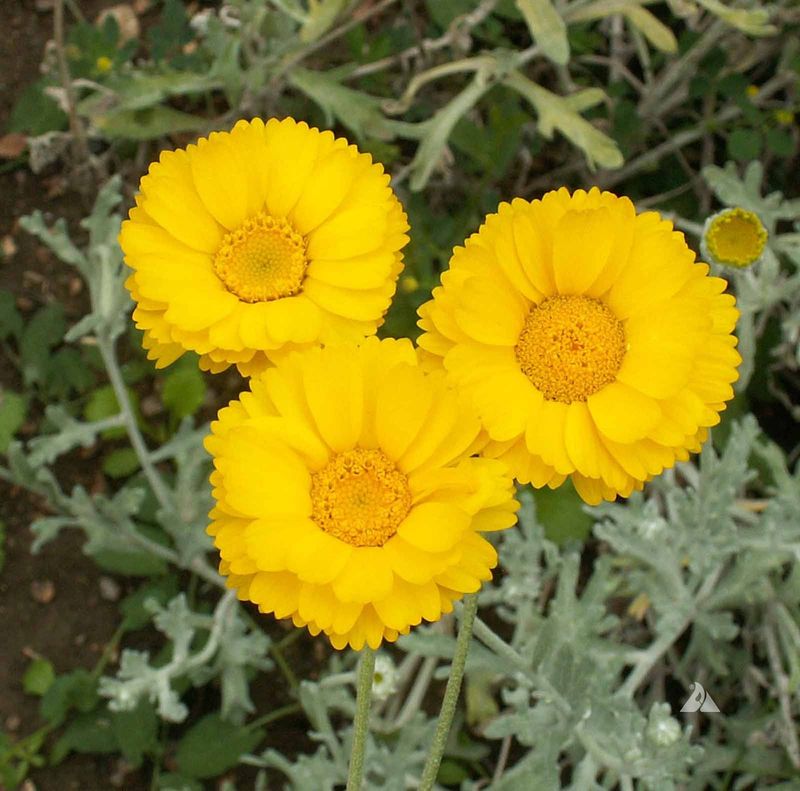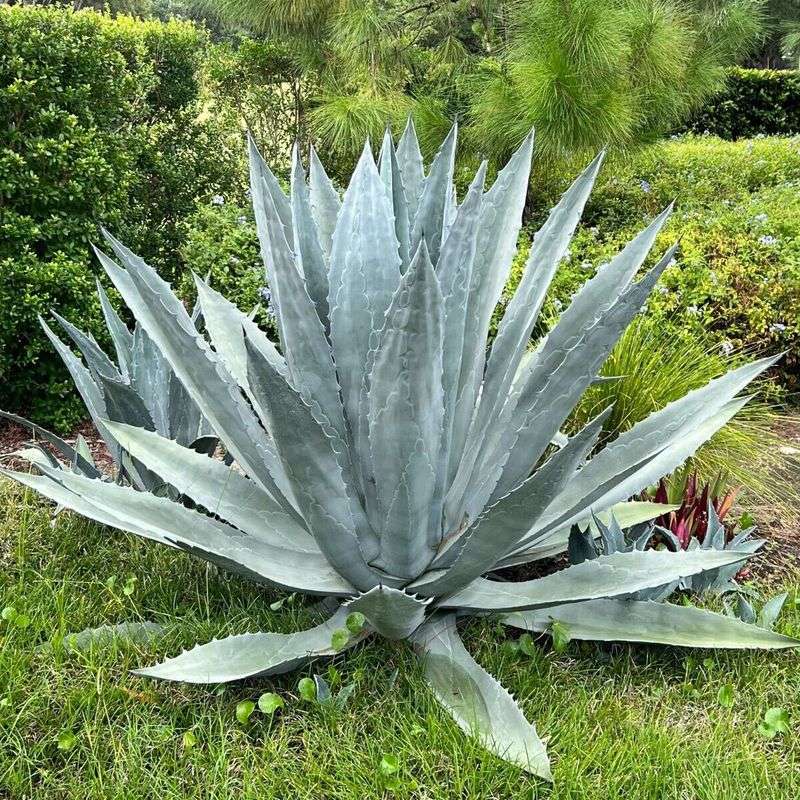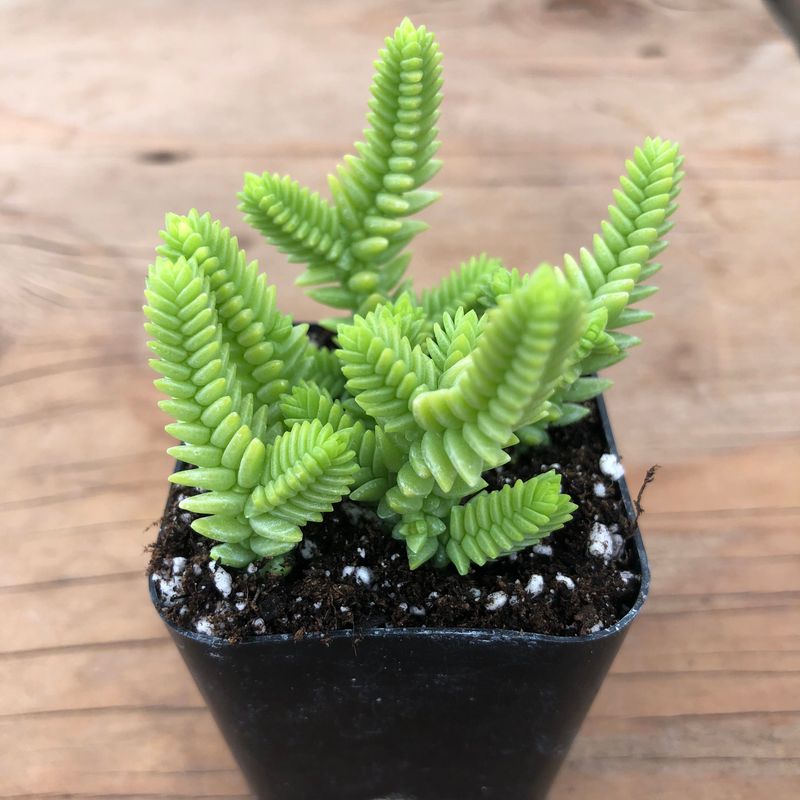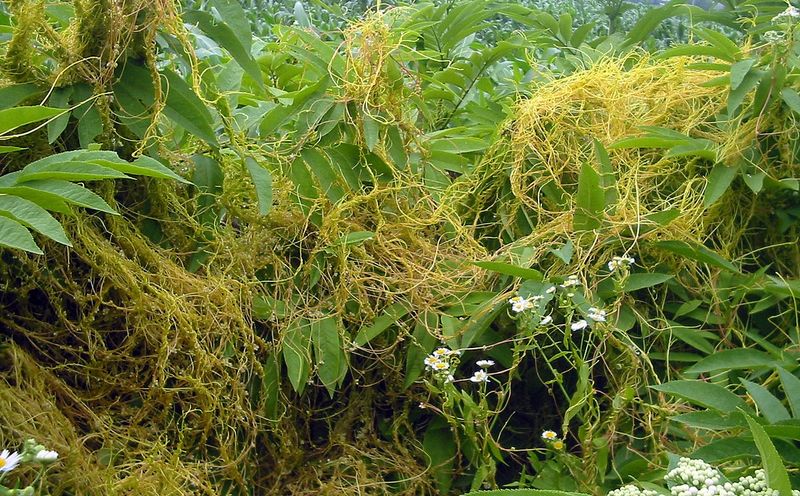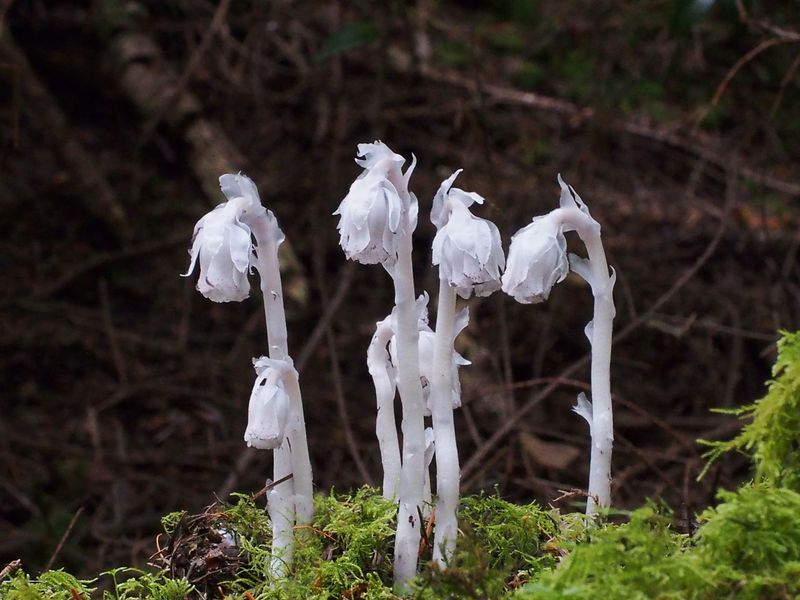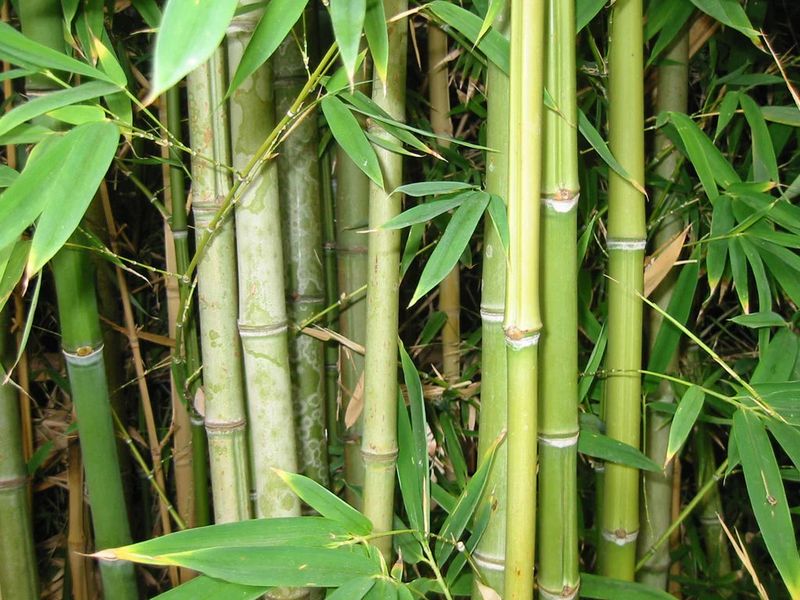Discover the world of resilient plants that defy the odds and thrive in the most challenging environments.
These 25 incredible species have developed unique adaptations that allow them to survive and flourish where others cannot.
Prepare to be amazed by their tenacity and learn how they employ fascinating survival strategies.
1. Welwitschia mirabilis
Welwitschia mirabilis is a marvel of endurance, surviving in the harsh Namib Desert for up to 2000 years. With just two continuously growing leaves, this plant defies the extreme conditions around it.
The long, strap-like leaves spread out from a central woody stem, collecting moisture from fog and dew. This ancient survivor relies on a deep taproot system to access underground water sources.
Its resilience is a testament to nature’s ingenuity, showcasing adaptations that enable life in one of the world’s most unforgiving climates. Admire how Welwitschia mirabilis stands as a symbol of persistence and survival.
2. Resurrection Plant (Selaginella lepidophylla)
The Resurrection Plant, or Selaginella lepidophylla, is a botanical wonder that appears lifeless when dry. However, with just a few drops of water, it springs back to life, unfurling its green fronds.
This ability is known as poikilohydry, allowing it to survive long periods of drought. During desiccation, the plant curls into a tight ball, preserving its vital parts. Once rehydrated, it resumes photosynthesis, thriving in arid environments.
This remarkable adaptation not only ensures its survival but also makes it a fascinating subject for study, illustrating nature’s resilience.
3. Mimosa pudica (Sensitive Plant)
Mimosa pudica, commonly known as the Sensitive Plant, exhibits a unique defense mechanism. Upon being touched, its leaves quickly fold and droop, deterring herbivores and conserving moisture.
This rapid response, called thigmonasty, is triggered by changes in cell turgor pressure. The plant’s ability to close its leaves also reduces water loss during hot days. It’s a captivating example of how plants can interact with their environment in dynamic ways.
Mimosa pudica’s intriguing behavior not only protects it but also makes it a popular choice among plant enthusiasts for its interactive qualities.
4. Venus Flytrap (Dionaea muscipula)
The Venus Flytrap, Dionaea muscipula, is renowned for its carnivorous nature. Native to subtropical wetlands, it supplements nutrient intake by trapping insects with specialized leaf lobes. The trap closes rapidly when trigger hairs are disturbed twice.
Once an insect is captured, the lobes seal tight, and digestive enzymes break down the prey. This process allows the plant to thrive in nutrient-poor soils, gaining essential nitrogen and phosphorus.
Venus Flytraps are not only fascinating for their predatory habits but also for their unique adaptations to challenging environments. They remain a favorite among carnivorous plant enthusiasts.
5. Pitcher Plants (Nepenthes & Sarracenia spp.)
Pitcher plants, including Nepenthes and Sarracenia species, have evolved an ingenious method to obtain nutrients. Their specialized pitcher-shaped leaves lure insects, which are then trapped in the liquid-filled cavity.
Once inside, the prey is digested by enzymes, providing the plant with essential nutrients. These plants are typically found in nutrient-poor environments, where their carnivorous diet compensates for the lack of natural soil fertility.
The vibrant colors and enticing nectar of pitcher plants make them both captivating and effective hunters. These adaptations highlight the remarkable diversity of survival strategies in the plant kingdom.
6. Bromeliads
Bromeliads are a diverse group of plants known for their ability to thrive in challenging conditions. They collect water in their leaf rosettes, creating mini-reservoirs that sustain them during dry spells.
These water-filled rosettes often become microhabitats for various organisms, fostering unique ecosystems. Bromeliads can grow on trees or rocks, adapting to different environments by utilizing minimal resources.
Their striking appearance and resilience make them popular among gardeners and plant enthusiasts. Bromeliads’ adaptability demonstrates nature’s ability to create life-sustaining solutions in diverse habitats.
7. Saguaro Cactus (Carnegiea gigantea)
The Saguaro Cactus, Carnegiea gigantea, is an iconic symbol of the American Southwest. Capable of storing large quantities of water within its thick, ribbed arms, it survives long, harsh desert droughts.
These cacti can live for over 150 years, growing slowly and steadily in the arid environment. Their extensive root systems efficiently collect water from rare rainfalls.
The Saguaro’s resilience is further enhanced by its ability to produce thousands of seeds, ensuring the continuation of its species. Marvel at how this towering giant stands as a testament to endurance in the desert.
8. Japanese Knotweed (Fallopia japonica)
Japanese Knotweed, Fallopia japonica, is notorious for its robust growth and invasive nature. Able to regenerate from tiny rhizome fragments, it can spread rapidly, often outcompeting native plants.
This plant is highly adaptable, thriving in a variety of conditions, from riverbanks to urban areas. Its resilience poses challenges for land management and biodiversity conservation.
Despite its invasive qualities, Japanese Knotweed is used in traditional medicine and for making compost. Understanding its behavior is crucial in managing its spread and protecting native ecosystems from its aggressive expansion.
9. Dandelion (Taraxacum officinale)
Dandelions, Taraxacum officinale, are common yet remarkable for their adaptability. They thrive almost anywhere, from meadows to urban sidewalks, thanks to their wind-dispersed seeds.
Each seed is equipped with a parachute-like structure, allowing it to travel long distances. Dandelions grow quickly and robustly, often considered a weed due to their persistence.
However, they offer nutritional benefits and are used in herbal remedies. Their resilience and versatility highlight the plant’s capability to survive and flourish in diverse environments, making them both a gardener’s challenge and a nature lover’s delight.
10. Common Reed (Phragmites australis)
Common Reed, Phragmites australis, dominates wetland habitats with its aggressive growth. It spreads through an extensive network of rhizomes, forming dense stands that can alter local ecosystems.
This perennial grass thrives in both freshwater and saline environments, showcasing its adaptability. The reed provides important habitat for wildlife but can also outcompete native vegetation, affecting biodiversity.
Efforts to manage Common Reed involve balancing its ecological roles with the need to protect native species. Its ability to thrive in varied conditions makes it a powerful example of plant resilience and adaptability.
11. Fire-Resistant Eucalyptus
Fire-Resistant Eucalyptus trees possess remarkable adaptations to survive wildfires. Their thick bark insulates vital tissues from intense heat, while the ability to resprout rapidly ensures recovery post-fire.
Some species even have seed pods that open only in response to fire, facilitating regeneration in fire-prone areas. These trees are integral to their ecosystems, providing shelter and food for various species.
Eucalyptus trees’ fire resilience highlights nature’s ability to adapt to recurring environmental challenges. Their presence in fire-affected landscapes underscores their role in ecological recovery and stability.
12. Mangroves
Mangroves are vital coastal plants adapted to salty, waterlogged environments. Their specialized aerial roots, known as pneumatophores, allow them to ‘breathe’ in oxygen-poor sediments.
Mangroves also excrete excess salt through their leaves, enabling survival in saline habitats. These trees provide crucial habitat for marine life, protecting shorelines from erosion and storm surges.
Mangrove ecosystems are biodiversity hotspots, supporting numerous species and serving as nurseries for fish. Their resilience to harsh conditions highlights their importance in coastal conservation and their role in mitigating climate change impacts.
13. Salicornia (Glasswort)
Salicornia, or Glasswort, thrives in high-salinity soils, making it a true halophyte. This succulent plant can withstand salt levels that would be detrimental to most species by excreting excess salt through its tissues.
Commonly found in salt marshes and coastal regions, Salicornia plays a role in stabilizing soil and providing habitat for wildlife. Its edible, salty stems are a unique culinary ingredient.
The plant’s ability to flourish in extreme conditions makes it a symbol of adaptability and resilience. Salicornia’s presence in challenging environments showcases nature’s capacity for innovation.
14. Rafflesia arnoldii
Rafflesia arnoldii, known for producing the world’s largest flower, is a parasitic plant lacking visible leaves, stems, or roots. It relies entirely on its host vine for nutrients, emerging only to bloom.
The flower can reach up to a meter in diameter, emitting a pungent odor to attract pollinators like flies. This unique reproductive strategy compensates for its lack of photosynthesis.
Rafflesia’s enigmatic existence and extraordinary bloom make it a subject of fascination and study. Its life cycle illustrates the diverse strategies plants use to thrive in niche environments.
15. Nepenthes rajah
Nepenthes rajah, a giant among pitcher plants, is renowned for its massive traps. Endemic to Borneo, it supplements nutrient intake by capturing insects and small animals in its spacious pitchers.
The plant’s size and unique adaptations allow it to thrive in nutrient-poor soils, where conventional growth strategies would fail. The trap’s slippery interior and digestive liquid ensure captured prey can’t escape.
Nepenthes rajah’s impressive stature and feeding habits highlight the innovative ways plants adapt to survive and flourish. Its presence in the rainforest adds to the ecosystem’s diversity and intrigue.
16. Ocotillo (Fouquieria splendens)
Ocotillo, Fouquieria splendens, is a desert marvel with a unique growth pattern. After rainfall, it rapidly sprouts leaves, which are shed during dry spells to conserve water.
The plant blooms with striking red flowers, attracting pollinators and adding color to arid landscapes. Its shallow root system allows quick water absorption, an essential trait for desert survival.
Ocotillo’s ability to adapt to the desert’s harsh conditions makes it a symbol of resilience. Its seasonal transformations and vibrant blooms offer a glimpse into the dynamic nature of desert ecosystems.
17. Quaking Aspen (Populus tremuloides)
Quaking Aspen, Populus tremuloides, is known for its extensive clonal groves, formed through root suckers. This strategy allows entire stands to survive adverse conditions and regenerate quickly after disturbances.
The trees’ trembling leaves create a distinctive rustling sound, adding to their charm in forested landscapes. Their clonal nature means that what appears as a forest may be a single organism.
Aspens’ ability to adapt and thrive in diverse environments underscores their ecological importance. Their presence in various habitats highlights nature’s capacity for resilience and renewal.
18. Lodgepole Pine (Pinus contorta)
Lodgepole Pine, Pinus contorta, is uniquely adapted to fire-prone environments. Its serotinous cones only open after exposure to intense heat, ensuring seed dispersal post-fire.
This adaptation allows the pine to take advantage of nutrient-rich ash beds, fostering regeneration and growth. Lodgepole Pines are often among the first to recolonize burned areas, playing a crucial role in ecosystem recovery.
Their resilience to fire highlights the dynamic relationship between plants and their environments. The Lodgepole Pine’s adaptations exemplify nature’s strategies for survival and ecological balance.
19. Strangler Fig (Ficus spp.)
Strangler Figs begin life as epiphytes, germinating in the canopy of a host tree. Over time, they send roots to the ground, enveloping and eventually overtaking their host. This growth strategy allows them to access sunlight and nutrients in dense forests.
The process can lead to the host tree’s demise, leaving the fig as a standalone structure. Strangler Figs’ complex life cycle and interactions with their environment demonstrate the diverse strategies plants use to thrive.
Their presence in rainforests contributes to the dynamic and competitive nature of these ecosystems.
20. Desert Marigold (Baileya multiradiata)
Desert Marigold, Baileya multiradiata, is a hardy plant that thrives in arid environments. It completes its life cycle rapidly, taking advantage of brief moisture periods to reproduce and spread.
The bright yellow blooms attract pollinators, while its drought tolerance ensures survival during prolonged dry spells. Desert Marigold’s ability to endure harsh conditions makes it a common sight in desert landscapes.
This plant’s resilience and vibrant appearance add life to otherwise barren surroundings, showcasing the adaptability of desert flora. Its presence is a testament to nature’s ability to flourish in challenging habitats.
21. Agave (Agave americana)
Agave americana, known for its monocarpic senescence, flowers once after decades of growth. Its thick, fleshy leaves store water, allowing it to survive in arid regions.
The tall flowering stalk is a dramatic culmination of its life cycle, ensuring seed production before the plant’s death. This strategy maximizes reproductive success in challenging environments.
Agave’s striking form and drought tolerance make it a popular choice for xeriscaping. The plant’s life cycle and adaptations highlight nature’s ingenuity in ensuring survival and reproduction in harsh climates.
22. Crassula rupestris (Watch Chain Plant)
Crassula rupestris, or Watch Chain Plant, is a succulent that thrives in rocky, inhospitable environments. Its tightly packed leaves store moisture, enabling survival with minimal water.
The plant’s compact growth and drought tolerance make it an ideal choice for rock gardens and xeriscaping. Crassula rupestris’ resilience is a testament to the versatility of succulents in harsh conditions.
This plant’s unique form and adaptability offer insights into the diverse strategies employed by desert flora. Its ability to flourish in challenging settings underscores the resilience and beauty of succulents in nature.
23. Dodder (Cuscuta spp.)
Dodder, Cuscuta spp., is a parasitic vine that bypasses photosynthesis by extracting nutrients from host plants. It wraps around its host, forming haustoria that penetrate and draw sustenance.
This strategy allows Dodder to thrive in various environments without relying on sunlight for energy. Its thread-like stems and lack of leaves make it a unique and efficient parasite.
Dodder’s presence highlights the complex interactions within ecosystems and the diverse survival tactics employed by plants. Studying this plant offers insights into parasitic relationships and ecological dynamics.
24. Indian Pipe (Monotropa uniflora)
Indian Pipe, Monotropa uniflora, is a unique plant that lacks chlorophyll, obtaining nutrients through a symbiotic relationship with mycorrhizal fungi. This partnership allows it to survive in shaded forest floors without photosynthesis.
The plant’s ghostly appearance and reliance on fungi make it a fascinating subject for botanists and nature enthusiasts. Indian Pipe’s life cycle illustrates the diverse adaptations that plants can develop to overcome environmental challenges.
Its presence in forests highlights the interconnectedness of ecosystems and the importance of symbiotic relationships in nature’s resilience.
25. Bamboo
Bamboo is renowned for its explosive growth rate, with some species growing up to three feet in a single day. This rapid expansion is facilitated by underground rhizomes, allowing bamboo to recover quickly from environmental stresses.
Bamboo’s versatility makes it valuable for construction, crafts, and environmental conservation. Its ability to thrive in diverse climates showcases its adaptability and resilience.
The plant’s rapid growth and sustainability make it a symbol of strength and renewal. Bamboo’s presence in various ecosystems highlights its role in ecological balance and its potential in sustainable practices.
